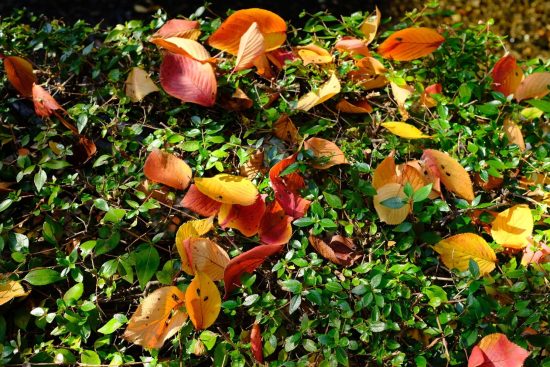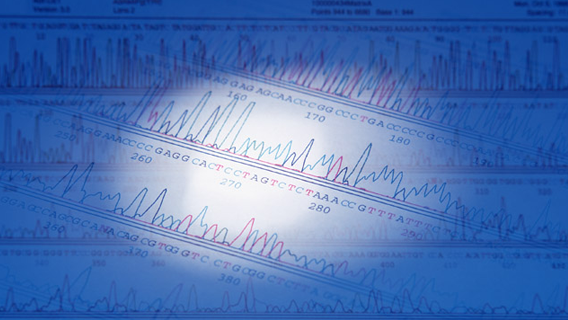It has already passed over the middle of November, it is still very hot at more than 25 degrees. The leaves fallen on the roads let us know that autumn is already here.

The fallen leaves of cherry-blossom along the Fushimi Horikawa river
In Kyoto, various trees are planted in the streets and house gardens. In particular, there are many cherry trees that the local residents love.
The leaves of Ginkgo trees on the main streets of Fushimi turned yellow, and the leaves of cherry trees along the Horikawa river turned red, and the fallen leaves are covering on the road.

The turning red leaves of cherry trees on the main streets of Fushimi Horikawa on November 20, 2020
Apart from the rice we produce on our own field, we use Yamada-Nishiki as the ingredient rice for the sake brewing. The rice is contract-cultivated by Okamoto Farmer, the agricultural corporation in Tojo-cho, Hyogo Prefecture, where is the best sake rice production area in Japan.
Yamada-Nishiki, called the queen of Japanese sake rice, was developed by modern hybrid breeding technology. The development history is as follows.
In the middle of the Meiji era (1868-1912), prefectural agricultural Institutes were established in every prefecture of Japan.
Artificial breeding of paddy rice varieties in Japan began in 1904. The Hyogo prefectural institute was established in April 1894, and the artificial breeding began in 1921.
In addition, in response to demand from sake brewers in the prefecture, the prefecture became the first in Japan to establish a research institute that dedicated to sake rice, the "Sake Rice Institute" in 1928.
Yamada-Ho, the female parent of Yamada-Nishiki, was adopted as a recommended variety of the prefecture in 1912, after repeated comparative experiments by using native varieties in Hyogo prefecture. On the other hand, Tankan-Watarifune (meaning of Tankan is short height), the male parent of Yamada-Nishiki, was adopted, which was supplied from the agricultural institute of Shiga prefecture in 1918. With the aim of development for the breeding sake rice with excellent quality, short height, and resistance of falling and disease, the artificial cross experiment was started in 1923. The ninth generation of the variety was cultivated in 1932, and the variety was named Yamada-Nishiki, and it was registered as a recommended sake rice variety of the Hyogo prefecture in 1937.
The Tojo city, Hyogo prefecture is located on the backside of the Rokko mountains overlooking Nada district of Kobe City. On the low hills that extend from the east to west area, there are gently sloping terraced rice-fields on both banks of the Tojo River, which flows from the northeast to southwest areas. The water resource is supplied from several reservoirs scattered on the mountainside, they store nutritious water from the fallen leaves of the broad-leaved forests to the north and south areas.
The soil is composed of tuff derived from ancient volcanic ash with a high content of clay, which have high fertilizer retention and base replacement capacity. Since the Edo period (1603-1868), the area has been famous for the production of rice for sake brewing, supplying the Nada-Gogo district.
In the late Meiji era (1868-1912), the Hyogo prefectural agricultural Institute started a hybrid breeding to improve rice varieties in the prefecture. The names of some of the varieties, which were named after regions in the prefecture, can be found in the recommended varieties history table. There are Nojo-Ho, Tenjin-Ho and Yamada-Ho, which later became famous as the mother of Yamada-Nishiki.


The "Yamada-Nishiki" exhibition rice field under the direct management of Matsumoto Shuzo in the Akitsu district of Tojo-cho, Hyogo prefecture.
Three theories have been handed down in Hyogo prefecture about the origin of Yamada-Ho, the mother of Yamada-Nishiki.
The first theory is the fact that it was possible for common people, including women and children, to travel safely and freely throughout the country during the Edo period (1603-1868) .
Not surprisingly, the roads were spread all over the country centering on Edo city, and not only accommodations but also communication tools such as letters to each place were established.
In particular, the worship trip to Ise grand shrine, called "pilgrimage to Ise (Shrine)", was popular all over the country. The funds were accumulated every month for five years by saving money, it is called "Isekou", among good friends, and were allocated to the worshipers in the order of lottery. During the trip, worshipers interacted with confucianists, calligraphers, Dutch scholars, wasan scholars, and agronomists. The local products spread all over the country.
It is handed down that Yamada-Nishiki's future mother, "Yamada-Ho," was brought back from "Ise Yamada village" on the way to Ise by Mr. Shinzaburo Tanaka, the owner of a farmer living in Yoshikawa village. It is said that he returned home with a handful of beautiful fruitful rice ears that shined against the beautiful autumn sunset and spread to nearby areas in Hyogo prefecture.
The second theory was that it was raised by Mr. Seisaburo Yamada, an enthusiastic farmer in Takamachi, who distributed seeds himself and encouraged neighboring farmers to produce them. He also branded each bale of rice with the name "Yamada-Ho" and supplied it to brewers.
A monument is erected on the mountainside of the village to express gratitude to Mr. Yamada today.
The third theory has been handed down to Yamada village in the prefecture. In the agricultural products section of the "3rd National Industrial Exhibition" held in 1897, "Yamada-Ho" was recognized as the best quality in Japan due to its excellent quality, and it became popular among farmers in the suburbs. After that, it is said that it spread from the local area to the prefecture.
Another reason why Hyogo prefecture became the first major produce area of sake rice in Japan is the system called the "village rice system". The system was born from the idea of a sake brewers in Nada-Gogo who emphasizes not only the quantity but also the quality as sake brewing rice to be used as a raw material.
During the Edo feudal era, rice was taxed as "annual tribute rice." The taxation of annual tribute rice was not imposed on individual farmers but the entire village, and there was a strict collective responsibility for quality assurance.
The new Meiji government allowed individuals to own the land and also imposed the tax on the individuals. Furthermore, as a result of switching from rice to money as a tax payment method, farmers gradually began to make effort to mass-produce rice rather than the quality itself.
Against this background, sake brewers in Nada-Gogo felt a sense of crisis about the deterioration of the quality of sake rice greatly affects the quality of sake. Therefore, on the condition that the quality of sake rice produced in each village is guaranteed and the production quantity is stable, the sake brewers paid in advance in order to improve the production motivation and quality of the farmers who produce sake rice.
By improving the quality of rice used as a raw material for sake brewing and increasing the production, the quality of sake in Nada-Gogo was eventually improved. Against the background of overwhelming quality superiority, it has established the brand as the best sake producing area in Japan. It was a great turning point that we can say that "the birthplace of modern sake is Nada" today.
Matsumoto Sake Brewery purchases about 800 bales (60 kg / bales) of “Yamada-Nishiki" every year. The raw rice is harvested by the "village rice system" operated by "Okamoto joint farm, agricultural corporation in Okamoto, Higashijo-cho, Hyogo prefecture.
Agricultural corporations are being created in various parts of the village with the support of the national government in order to solve the shortage of successors in privately-owned farmers and to consolidate the agricultural lands located in various parts of the village as one of the basic agricultural reforms.
The rice varieties produced in Higashijo-cho are narrowed down to "Yamada-Nishiki," which is the raw material for sake, and the shipping destination is voluntarily selected. Okamoto joint farm is constantly discussing with Matsumoto Sake Brewery about cultivation methods to improve quality and the amount of purchase, while making efforts to stabilize farm management and improve the quality of products.
In addition, Matsumoto Sake Brewery cultivates "Yamada-Nishiki" by the employees themselves on its own 5,000 m2 rice field. This is to show farmers how to grow best raw rice that the sake brewers themselves believe.

Flowering of Yamada-Nishiki August 28, 2020
COLUMNEssay

Essay
Scenery from the sake brewery - 006 Ingredient rice, Yamada-Nishiki
Monthly photo essay on Japanese sake brewing by Mr. Keiichiro Katsuki, a Japanese sake brewing expert.
Please refer to episode 001 for more information on the author.





